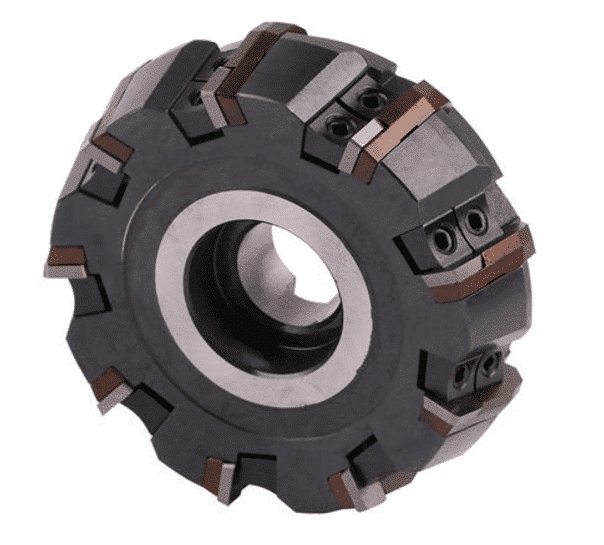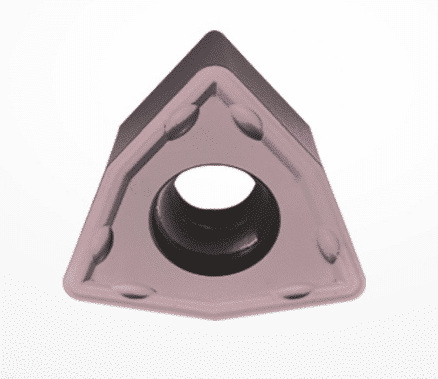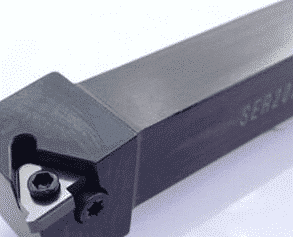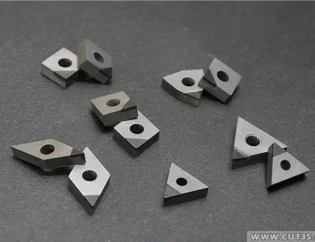在日常生产中,车刀材料和形状的合理选择直接影响到劳动生产率和零件加工质量。在切削过程中,刀具必须承受很大的切削力和冲击力,并且要在高温下工作,并不断承受强烈的摩擦和挤压,这很容易引起车刀的磨损和损坏。如果不合理选择工具材料,零件将无法满足使用要求,造成材料浪费,机床和设备过早损坏,造成巨大的经济损失。因此,应根据不同的加工材料选择不同的刀具材料。合理选择切削刀具材料,不仅可以提高劳动效率,保证加工质量,而且可以节省成本,减轻工人的劳动强度。
合理选择工具材料s
工具材料主要包括碳工具钢,合金工具钢,高速钢,硬质合金,陶瓷和超硬工具材料。

碳素工具钢和合金工具钢主要用于制造工具,模具和量具。
高速钢是一种工具钢,具有更多的合金元素,例如钨(W),钼(Mo),铬(Cr)和钒(V)。高速钢工具易于制造,易于磨削,易于通过磨削获得锋利的边缘,并且具有良好的韧性,常用于冲击力较大的场合。它特别用于制造各种复杂的成型工具和孔加工工具。高速钢可分为钨和钨钼。钨高速钢(W18Cr4V)目前被广泛使用,但由于耐热性差而不能用于高速切削。钨钼高速钢(w6wo5cr4v2)用于制造热轧工具,麻花钻等。
硬质合金是一种粉末冶金产品,它是由钨和碳化钛粉末以及钴作为粘结剂制成,然后在高压下经高温烧结而成的。它是目前使用最广泛的车刀材料。根据组成,存在三种常用的钨钴合金(K型),钨钛钴合金(P型)和钨钛钽钴合金(M型)。钨钴硬质合金由碳化钨(WC)和钴(CO)组成。它们主要用于加工铸铁,脆性材料或具有高冲击力的场合。常用代码为K01,K10和K20。通常,K01用于精加工,K10用于半精加工,K20用于粗加工。钨钛钴硬质合金由碳化钨,钴和碳化钛组成。它适用于加工具有高韧性的钢或其他塑料材料,但它易碎,不耐冲击且不适合加工易碎材料。通用代码为P01,P10和P30。通常,P01用于精加工,P10用于半精加工,P30用于粗加工。钨,钛,钽和钴适用于加工长切屑或短切屑的黑色金属和有色金属。常用的代码是M10和M20。 M10用于精加工,M20用于粗加工。陶瓷切削刀具主要用于有色金属,铸铁和淬硬钢的半精加工和精加工。超硬材料是立方氮化硼和金刚石:立方氮化硼用于合金,淬硬钢和冷硬铸铁的半精加工和精加工。金刚石可以精确地切割有色金属和合金以及高硬度的耐磨材料。
选择穿线刀s

螺纹车刀的选择广泛用于各种机械产品中,带有螺纹和蜗杆的零件也得到广泛使用。根据不同的螺纹选择不同角度的螺纹车刀。
(1) there are two kinds of triangular thread turning tools: high speed steel and hard alloy. The high-speed steel thread turning tool has the advantages of convenient grinding, easy sharpening, good toughness, not easy to crack the tip of the tool, small surface roughness value of the thread, but poor heat resistance, which is only suitable for low-speed thread turning. Hard alloy thread turning tool has high hardness, good wear resistance, high temperature resistance, good thermal stability, but poor impact resistance. Therefore, carbide thread turning tool is suitable for high speed cutting. In high-speed cutting, the actual profile will be enlarged, so the sharp angle of the tool should be reduced by about 30 ‘, and the roughness of the front and back face of the turning tool must be very small.
(2) when turning trapezoidal thread, the radial cutting force is large. In order to reduce the cutting force, it can be divided into rough turning and finish turning. During rough turning, in order to facilitate left and right cutting and reserve the finishing allowance, the width of the cutter head shall be smaller than the width of the bottom of the alveolar, the back angle of the diameter shall be about 8 °, the front angle shall be 10 ° – 15 °, the back angle of both sides shall be (3 ° – 5 °) ± ψ (thread rising angle), and the tooth angle shall be 30 ° 0 – 30 ′. The front angle of high-speed steel finishing tool diameter is 0, and the angle between the cutting edges on both sides is equal to the tooth angle. In order to ensure the smooth cutting on both sides of the cutting edge, the cutting edge should be grinded with a large rake angle (10 ° – 16 °). However, it must be noted that the cutting edge at the front end of the turning tool cannot participate in the cutting. The high-speed steel ladder thread turning tool can process the thread with high precision and small surface roughness, but the production efficiency is low. In order to improve production efficiency, carbide turning tools can be used for high-speed cutting when turning general precision threads.

(3) there are two kinds of commonly used worm: metric (20 °) and British (14.5 °). British worm is rarely used in China. Metric worm is mainly used. High speed steel turning tool is generally used for worm turning, and rough turning and fine turning are used for turning. During rough turning, it is required that the included angle between the cutting edges on the left and right sides is slightly less than twice the tooth shape angle, the width of the cutter head is less than the width of the tooth root slot, the left and right radial front angles of 10 ° ~ 15 ° are ground, the back angles of both sides are (3 ° ~ 5 °) ± ψ, and the cutter tip is properly rounded. When finishing, the included angle between the left and right edges is equal to twice of the tooth shape angle and should be symmetrical. The straightness of the cutting edge is better, the surface roughness value is small, and the chip rolling groove with large front angle (15 ° – 20 °) is ground. The above are only some basic ideas for the selection of turning tool materials and shapes. Due to the wide variety of cutting tools, the structural types and processing requirements of parts vary greatly. In practical operation, there is still a need for experience. Skilled personnel conduct scientific analysis based on the production conditions of schools and enterprises (production, planning, production compactness, scale, capital, etc.) and the conditions of processing parts and equipment, and select the cutting tools with reasonable performance and price, In this way, we can give full play to the potential of the equipment, ensure the processing quality, improve the processing efficiency, and improve the experience and efficiency of the enterprise.









